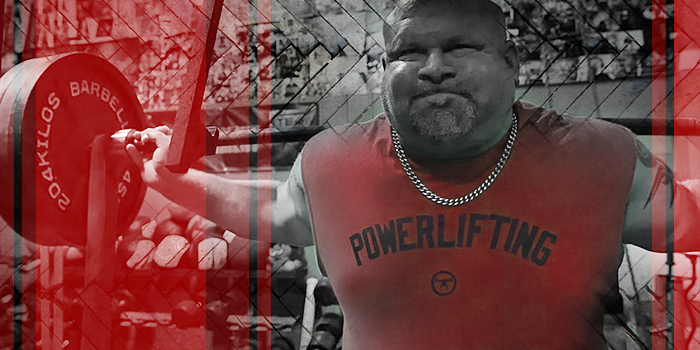
When I was at my best, I had an 850-pound deadlift and an 1160-pound squat. I attribute these numbers to having a strong lower back, hamstrings, and glutes. I trained at Westside Barbell for 17 years following their basic principles of training. I did my dynamic work on Fridays where I primarily did box squats and speed pulls for speed. On Mondays I did my max effort work and followed the old theory:
- 6 out of 10 workouts — Some variation of good mornings
- 3 out of 10 workout — Some variation of low box squat
- 1 out of 10 workout — Some variation of a deadlift
Dynamic Work
My dynamic work was always done on Friday. Dynamic work always consisted of speed work on the box squat and deadlift.
Box Squats
When I did my speed work on box squats, I tried to focus on these key points:
- Perfect form. I would squat in a pair of squat briefs and sometimes, depending on where I was in my training cycle, a squat suit with the straps down. This is where I learned to work on and perfect my form in the gear. When training without gear the same idea applies. Train to perfect form over multiple sets and repetitions.
- Sit back. Box squats allow you to sit back further in the squat than when free squatting, thereby emphasizing the use of the hamstrings, glutes, and lower back.
- Focus on weakness. I would use the box height to focus on specific areas of weakness. If I were having issues with “flopping” on the box and/or I had weak hips, I would raise the box height until there was no longer a “flopping” issue. Through repetition building up the weakness and beginning to lower the box height half an inch at a time, I could make it back to parallel without the “flopping” issue. If my issue was building lower back strength for the deadlift and the squat, I would lower the box 1-2” below parallel during my speed squats to overload my lower back.
- Build explosive strength. Much like bouncing a basketball, when the ball hits the floor, the ball absorbs the energy on impact and then uses it when it rebounds to bounce back up. When doing a free squat, the same occurs and the rebound energy is used to rebound out of the bottom of the squat. By separating the eccentric/concentric phases of the lift, you take away the stretch reflex. By relaxing the hips on the box for a split second and then flexing off the box you will build more explosive strength, which will have a greater carryover when free squatting.
Speed Pulls
Speed pulls were done immediately after box squats on Friday. Typically I used one of the following setups for 8 sets of 1 rep each with about 15 seconds rest between sets:
- 33% of 1RM plus two doubled mini bands per side
- 45-50% of 1RM plus one doubled mini band per side
- 60-65% of 1RM with straight weight
The key points I tried to focus on when doing speed pulls were:
- Form. Speed pulls were done to correct form issues focusing on position at the start with butt down, head and chest up, shoulders behind the bar, digging the heels into the floor, and driving hips through at the top. It was important for me to use this perfect form to ensure I didn't allow the bar to get forward on me.
- Speed. When doing speed pulls you learn to generate speed and force. Getting the bar moving in the correct position is crucial, especially when pulling against bands.
Max Effort Work
Not all max effort work is the same. From lifter to lifter these exercises will be different. The lifter will need to determine which exercises they need based on their weaknesses or sticking points. Among max effort lifts, there are lifts that are strength builders and those that are strength testers.
Strength Builders
Strength builder exercises are those exercises used to target sticking points—due to weakness or technical breakdown—and build those areas up. For me, those exercises consisted of:
1. Cambered Bar Good Mornings. Done out of the rack or monolift. Done for max 1-5 reps. Due to the eccentric phase of this variation, this was my best strength builder. Lowering the weight as opposed to the suspended good morning variation would always make me very sore but always proved to be the best strength builder. This image shows depth.
2. Squat Good Mornings. This exercise is done with the weight suspended from chains. Sitting on a box or bench, you good morning the bar into a seated position. Then from the seated position, squat the weight to a standing position. Done for max 1-3 reps.
3. Close Stance Cambered Bar Low Box Squats. Done for max 1-3 reps to a 12” box. This is roughly 2-3” below parallel.
4. Close Stance SS Yoke Bar Low Box Squats. Done for max 3-5 reps to a 14” box. This is roughly 1-2” below parallel.
5. Seated Good Mornings. Done for a max 3-5 reps. From a seated position I would bend forward and touch my nose to the bench then raise back to an upright position.
Strength Testers
Strength testers are exercises used to gauge if training is addressing weaknesses. These exercises will show you if you are on track for upcoming meets. Exercises I used to test strength were:
1. Suspended Cambered Bar Good Mornings. Done for a one-rep max. I used the suspended good mornings to correct technical issues with the deadlift. When deadlifting, if the hips are not down with the shoulders behind the bar, the lift is almost impossible to lockout or complete. This variation is much the same. Once under the bar, if you attempt the lift with your butt too high or the weight in front of you, the weight will be nearly impossible (or completely impossible) to lift. This exercise teaches timing and position, which carried over to my deadlift.
2. Reverse Band Deadlifts. I used a blue band which lightened the weight such that 185-pounds barely touched the ground and at lockout it was the actual weight. Done for a one-rep max.
3. Pin 1 Deadlifts. Pin 1 raised the bar approximately 2-3” off the floor. Done for a one-rep max.










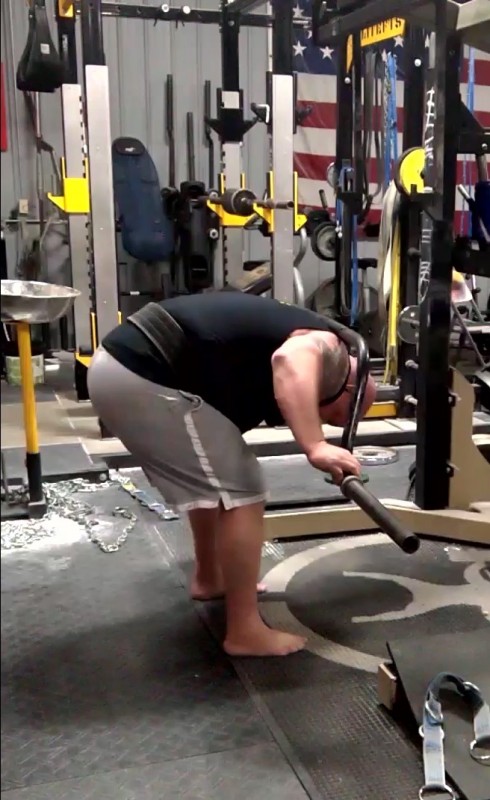
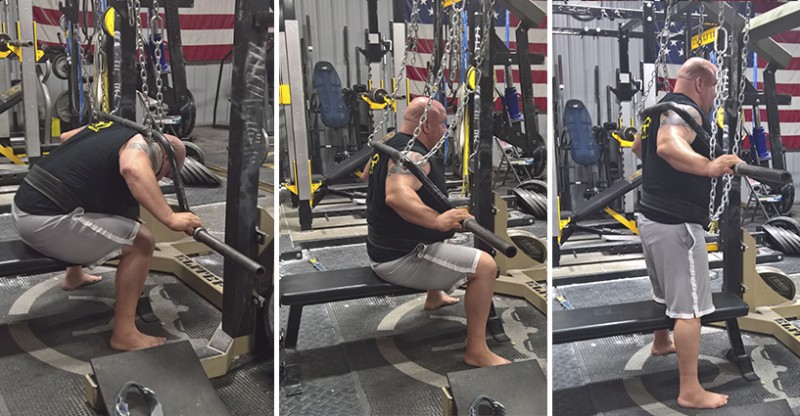
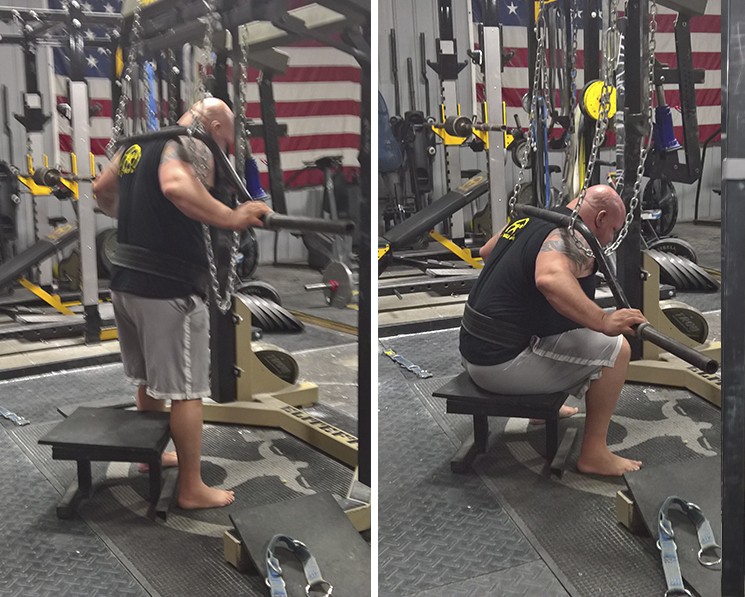
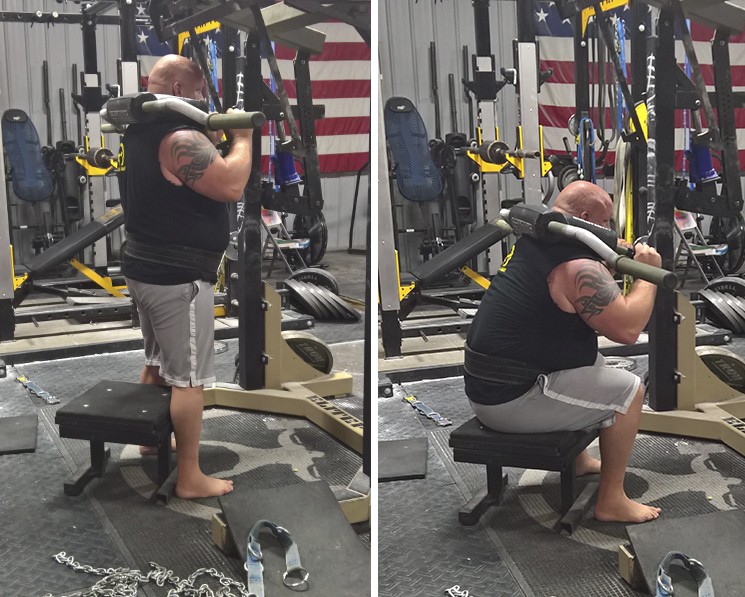
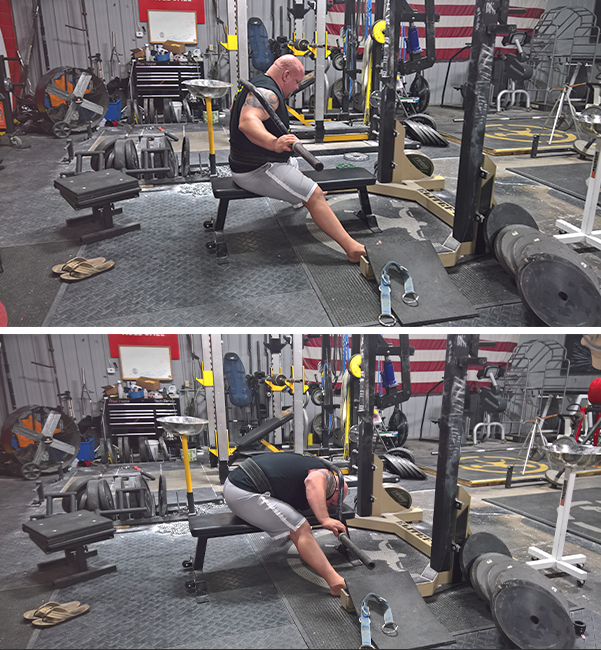
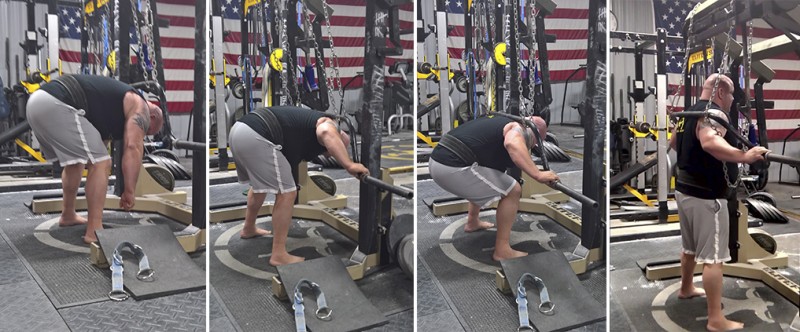
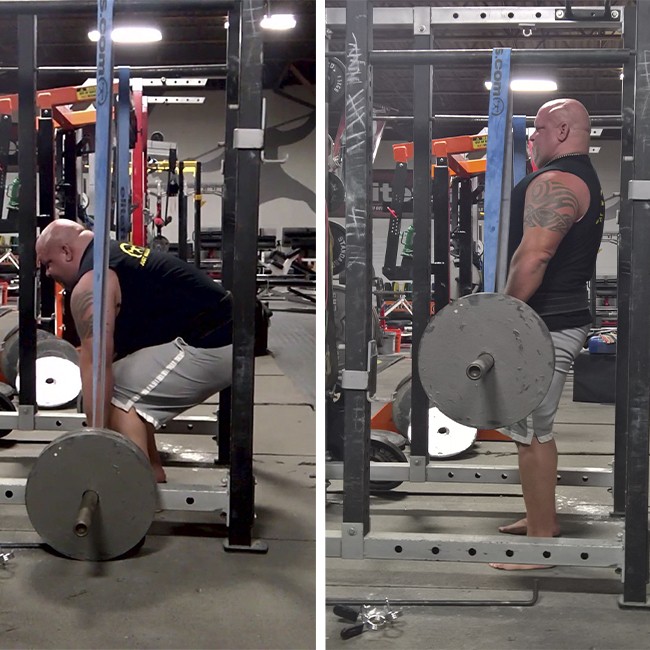
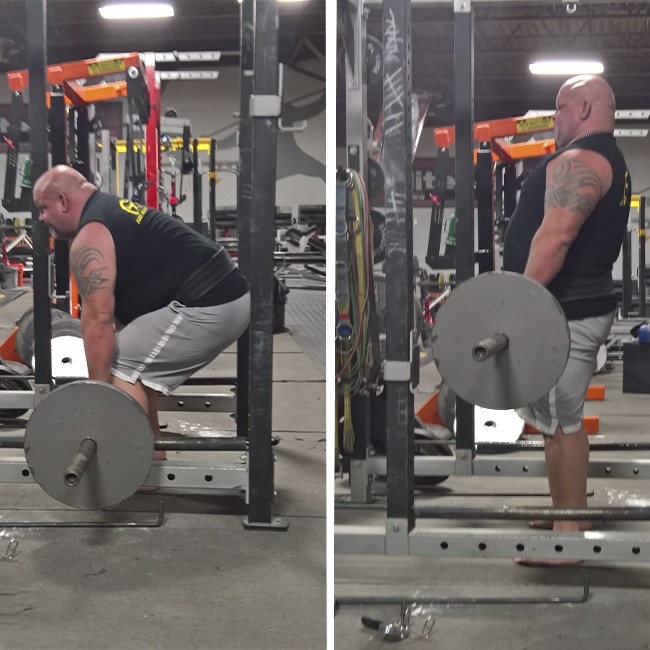

I always enjoy your articles. Good information